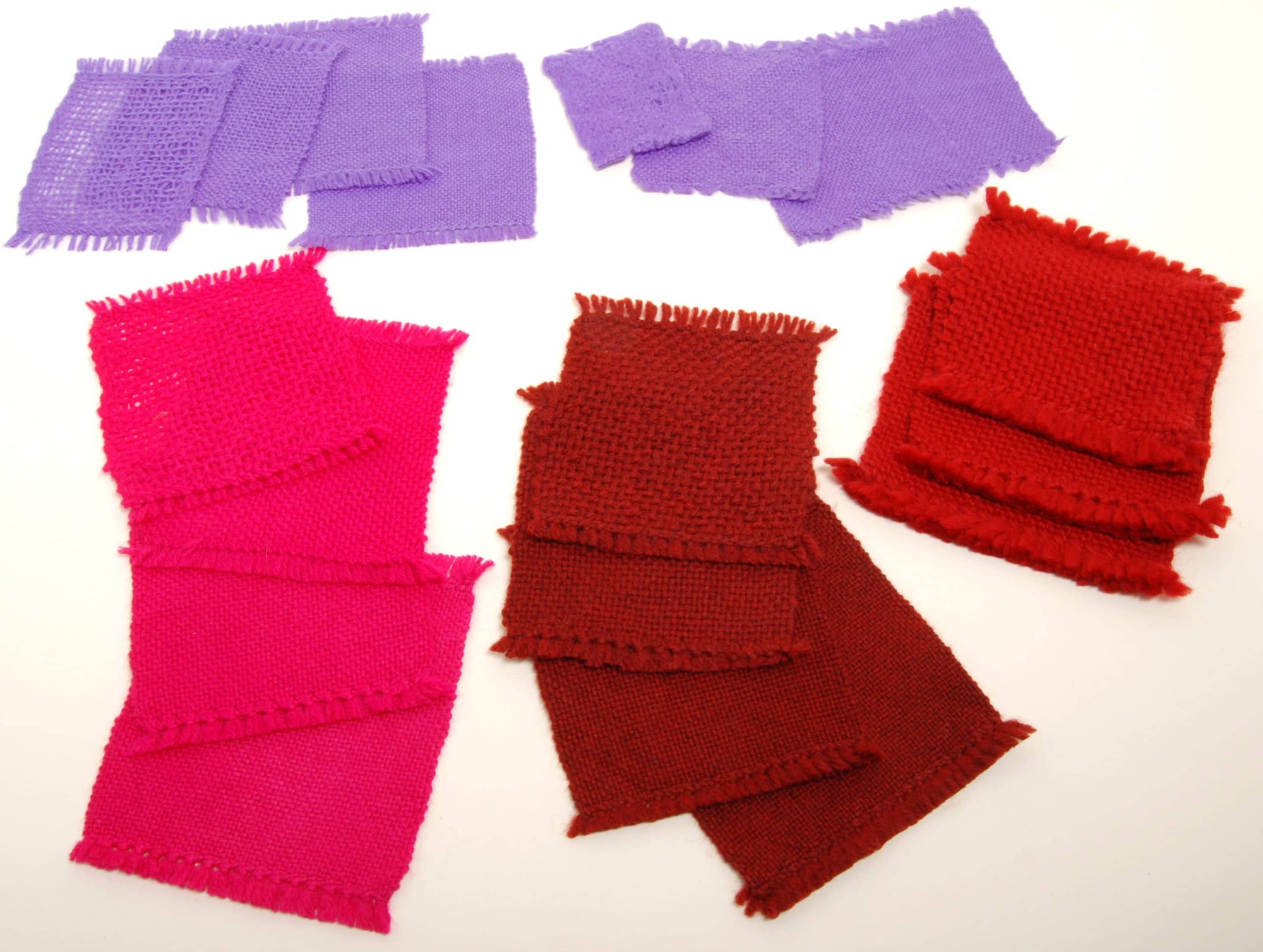By Jane Patrick
“It depends.” That is often the answer I give when I’m asked how to sett a yarn. It depends on the fiber content of the yarn. It depends on the size of the yarn. It depends on how the fabric will be finished. It depends on the intended use of the fabric.
Generally, once you’ve established what it is you’re going to make and what yarn you’re going to use, I always recommend sampling. (Now begins the common refrain, “I hate sampling!”) Without going into excessive detail, just let me say that sampling will tell you up front if your sett is correct for the project at hand.
To illustrate how helpful sampling can be, as well as how versatile yarn sett can be, I conducted a series of samples (with the help of our able in-house weaver Betty Paepke) using variable dent reed sections to help me.
I tried all four dents: 5-dent, 8-dent, 10-dent, and 12-dent using four different yarn weights. Each yarn was re-set for each sample. (I didn’t, for example, do a section of both 5-dent and 10-dent in the same sample but rather wove a sample at 5 and another sample at 10). All samples were woven in a balanced weave. That is, if the sett was 8 ends per inch (EPI), it was woven at 8 picks per inch (PPI).
All yarns are wool yarns from Brown Sheep (no superwash which won’t bloom), except for the bulky weight yarn which is 85% wool/15% mohair blend.
Each sample was warped at approximately 6" wide and woven 5" long. Hemstitching secured the ends. I hand washed all the samples in very hot water and Dawn detergent wearing rubber gloves, dried them flat, and steam pressed with a lot of pressure using a press cloth and high heat.
The Results of Sett Testing
Yarn 1: This bulky yarn sett at 5 epi is flexible enough for a large bulky scarf, at 8 epi the fabric is sturdy and somewhat flexible, and at 10 epi the result is a dense fabric suitable for table mats.

Yarn 2: I usually recommend an 8 epi sett for this wool worsted weight yarn, but these samples illustrate that it is good at all four setts. At 5 epi, the fabric is surprisingly stable and very flexible—I see a large, oversized scarf. At 8 epi the fabric is flexible with a nice tooth which would work as a smaller scarf or cocoon wrap. At 10 and 12 epi, you have a serviceable fabric that would be hard wearing, say for a jacket fabric or even a bag.

Yarn 3: At 10 epi, I find that this sport weight yarn is nicely balanced with good drape and is my usual sett. However, it works at 5, 8, and 10 as well. At 5 epi, the fabric is open and flexible but somewhat unstable. If I were to use this yarn at this sett, I would probably give the fabric a bit more finishing, placing it while still damp in a hot dryer for 5-10 minutes. After these samples, I actually prefer the sample at 8 epi to my usual 10 epi sett. The fabric has lovely drape with a bit of openness that would be good as a scarf. The 10 epi sample is a bit thicker and less open, as is the 12 epi sett.

Yarn 4: Here I’ve tried to push the possibilities of a fingering weight yarn. The two finishing techniques also show that the more open the weave, the more shrinkage, something to keep in mind should you want to felt a fabric on purpose. At 5 epi, the fabric is very open and not stable, but when subjected to extreme finishing, transforms into a dense, felted fabric with a lot of texture that might be used for a vest or hat. At 8 epi, the fabric achieves a good hand and solid structure when given more finishing than the hand-washed example. At 10 epi you have good structure but the hand is softer in the more heavily finished fabric. The finish is harder at 12 epi and is softer with very little more shrinkage in the more heavily finished fabric. This sample would be my preference were I to use this for a lightweight top or shawl.

So, you can see that much of how you sett your yarn really does depend…and I hope this will help you explore yarns and sett so you get the results you want. Below, I’ve provided all of the detail of my sampling project which I hope you’ll use as a jumping off point in your own explorations.


